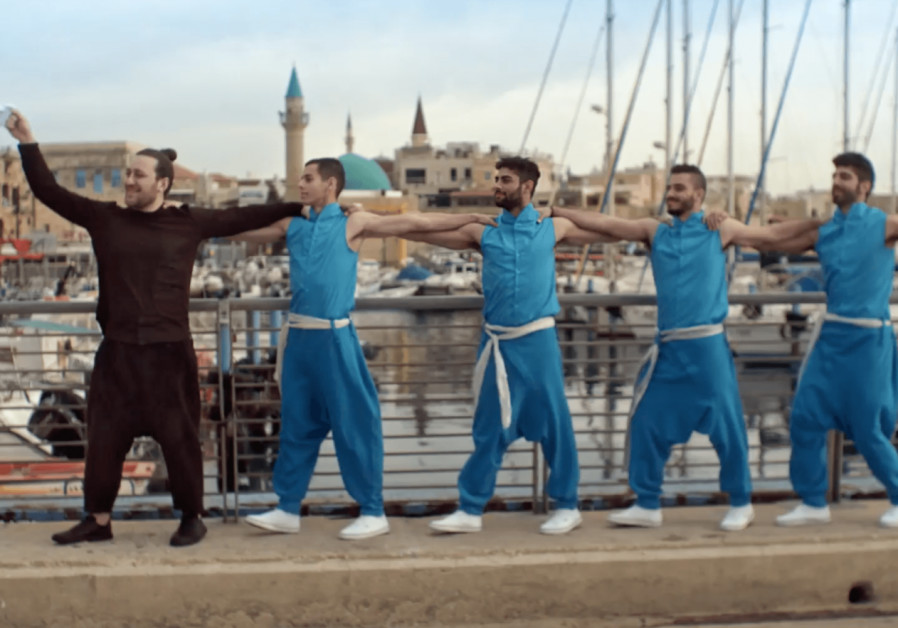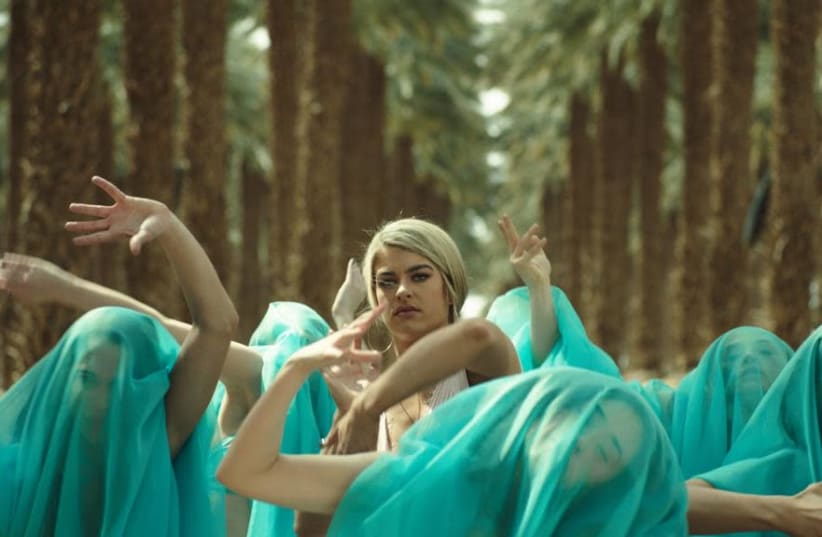Portugal’s Conan Osiris dances on a salt formation in the Dead Sea. Australia’s Kate Miller-Heidke moves to a drumbeat in Jaffa. Tamta of Cyprus waltzes along the boardwalk in Eilat. Romania’s Ester Peony frolics in the snow atop Mount Hermon.
Amid the over-the-top musical numbers in this year’s Eurovision Song Contest, millions of viewers will also be treated to short video clips featuring each of the 41 singers dancing at a different site in the country.
These videos, which are known as the “postcards” and are a Eurovision institution, introduce each artist during both the semifinals and the grand final.

Introducing the clips at the first semifinal, on Tuesday night, cohost Assi Azar said: “This year, we decided to push things just a little further. No more clips of good-looking singers walking around in beautiful locations. This time, those good-looking singers will dance in beautiful locations.”
The 40-second clips were filmed throughout March and April and were directed by Keren Hochma, who is herself a dancer and choreographer.

“We found 41 places that have not just beauty but also some sort of content, that tell a story,” Hochma told The Jerusalem Post at Expo Tel Aviv on Wednesday. “We started with the obvious places – Masada, Eilat, the Dead Sea, Haifa – and then we tried to look for places that were either visually interesting, or had a unique viewpoint.”
Those include the Ashalim solar power station in the Negev, the Beit Guvrin National Park and the Van Leer Jerusalem Institute.
Hochma said she – in coordination with artistic designer Shmuel Ben-Shalom – had to work to match up the location, the style of dance and the performers themselves, 41 times over.
“We did a lot of research into every singer,” she said. “We learned what they know how to do, what is fitting for them.”
Sweden’s John Lundvik appears on skates, while Russia’s Sergey Lazarev performs parkour on the walls of Jerusalem’s Old City, and Leonora from Denmark appears in a classical ballet routine.
And despite all their research, the tight schedules of the performers and fluctuating weather conditions meant that last-minute changes were inevitable.
Several times when the team tried to film atop Mount Hermon, the site was closed because of too much snow. It took special permission to film inside the Baha’i Gardens in Haifa, and assistance from the Israel Nature and Parks Authority to shoot in the Kinneret (Sea of Galilee).
While headlines swirled around the decision not to film at any locations in the West Bank, Hochma said she wasn’t given any such direction by KAN.
“I’m a person who creates art, and I went with the places that interested me in terms of the visuals and the content,” she said.
And she was particularly moved to shoot Kobi Marimi’s postcard at the Western Wall.
“Because it’s our postcard, it was important to us to give the Israeli viewers the feeling that they know something that not everyone knows,” Hochma said. That was not just the Kotel, but also the inclusion of dance partner Anna Aronov, a well-known dance figure in the country.
And with all 41 postcards complete – and praise rolling in – Hochma can look back with pride.
“It was such an exceptional project, both in its fun and its intensity,” she said. “And it was also a project that was imbued with a sense of responsibility to best represent our country.”
With 17 clips already revealed and 24 more to go, this year’s postcard videos have been praised by Eurovision fans.
“It’s very clever, in the sense that they bring the artist here and promote Israel in certain locations,” said Matt Friedrichs of ESC United vlog. “It’s very tourist oriented, but they didn’t neglect the country or the singer – they actually merged that well,” he told the Post in the Eurovision press center this week.
William Lee Adams of the popular wiwibloggs site said he was very impressed with the clips.
“They’re beautiful,” he said. “These are really impressive. All the countries use the postcards as an act of nation branding, but these tell a story.”
Adams told the Post that the production value on the video clips is “next level.”
“They really offer a sense of the depth and breadth of Israel’s landscapes,” he said, noting that many viewers definitely “don’t realize how gorgeous [Israel] is.”
